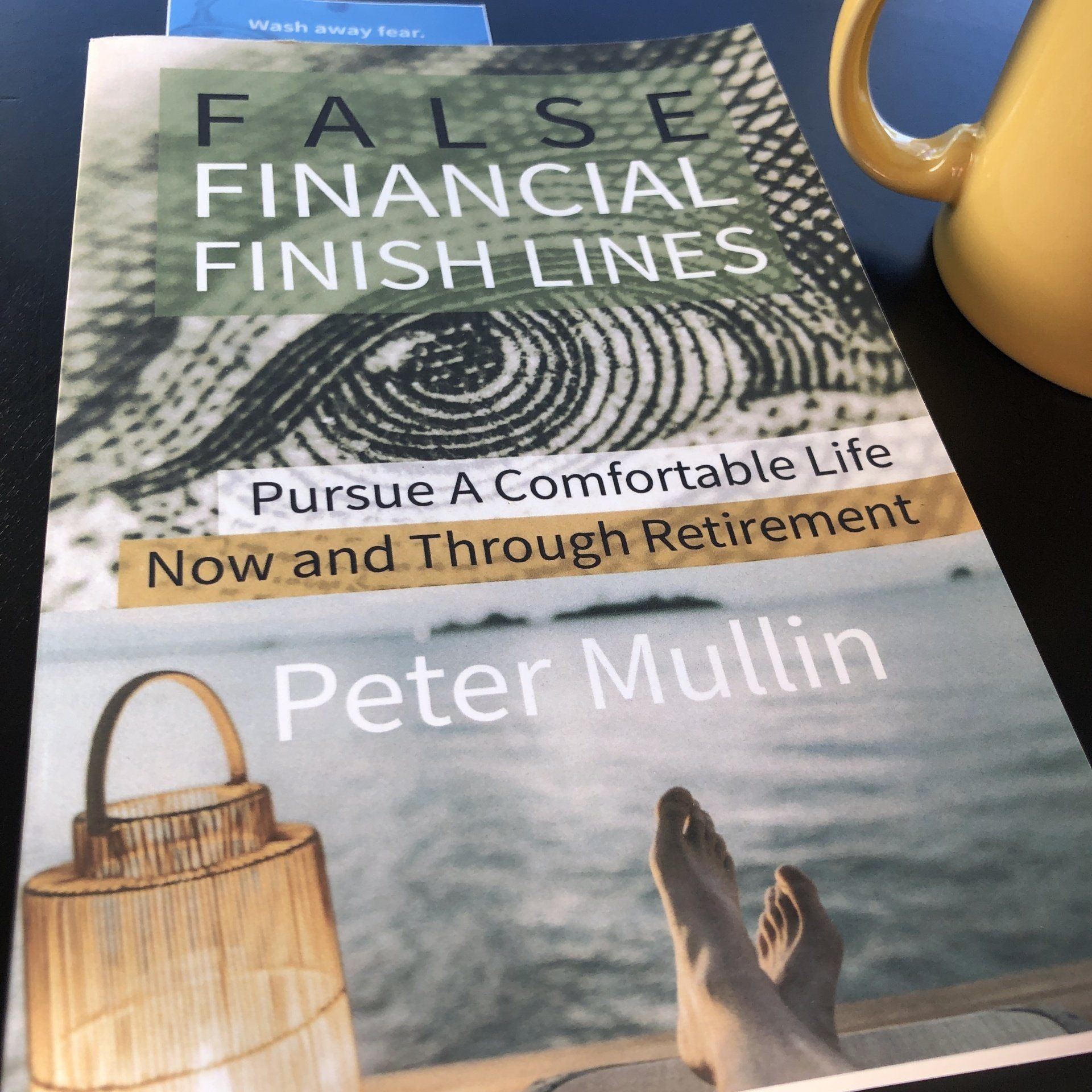Be aware of this market "magic trick"
The stellar and outlier one-year annualized results are likely to slowly melt away before our eyes month to month as this year carries on.

Be aware of this market "magic trick." The stellar and outlier one-year annualized results are likely to slowly melt away before our eyes month to month as this year carries on.
That sounds concerning at first glance. Right? Remember that the late spring and summer of 2020 saw the market come back at a historic pace. In 2021, we are probably closer to a baseline for a healthy market and economy.
If investors are only looking at investments on a one-year basis, then they may be miffed by this reversion that is occurring. DIY Investors beware: One year now excludes one of the worst quarters in market history. The S&P 500 saw a monthly loss of 12.51% in March 2020. A positive 2nd quarter of 6.35% followed. (That would be over a 24% annualized return.) The third quarter added 2.86%. (1 - yCharts )
Well that is the math. The bad storm was followed by a positive streak. You do not have to be a runner or baseball fan to appreciate that sports often require steady wins over time. A long-distance runner can't expect great personal results by sprinting the first and last mile. They finish long races by pacing themselves.
Have you heard this message lately?
Look, if an investor is going for a prudent average result over time, then focus on the average. The great years + poor year(s) + good years / Time = average portfolio results.
How long is a season for investors? In one case, I would think 3-5 years at a time could see an entire "season" play out. Of course, I am referring to market cycles. And sometimes, a market cycle can be 10-years. The bond bull market, for instance, has been about 30+ years long now.
It is good that bull and bear markets do not typically come and go within months. It gives us time to pace our portfolios.
When it comes to investing in equity or the stock market, it is about placing your money in ideas that we feel have a great foundation, have long-term growth in mind, and have a history of good stewardship.
Let's say this another way:
-We are not looking for a flash in the pan.
-We try to avoid investing in shiny objects.
-We are not always trying for the "quick win."
-Some clients do like to try for short-term wins. But we don't bet the farm.
Reversion
It isn't magic when we see a one-year number starting to fade away from high double digits to what is, in my opinion, a more "normal" range. This is what we call reversion to the mean – or the average.
The average can be significant. With a crisis like we saw in 2020, it is typical to see abnormal outlying double-digit returns after the storm. But those high and attractive-looking results slowly melt away as we push into a bull market. This reversion is perhaps why some perceptive referrals have joined Mullin Wealth lately.
Curbing our enthusiasm is what I've been sharing with you, Clients, for the last six months or so. That is, be aware of exuberance around us. What are our expectations? Our hope here is for growth over the long term. If you're going to watch your results – and judge them as winning or losing daily, then I recommend bringing a motion sickness bag with you. Sorry. :)
Investing does not need to be innovative nor filled with frills. Yes, with measured risk and a rules-based approach, clients can kick back and watch the results come in over the long run.
How? Please read about my take on retirement income and the 4% distribution rule >> https://www.mullinwealthmanagement.com/my-take-the-4-retirement-income-rule
We are only bringing aboard clients who are like-minded and directly referred by our clients and professional network as of 01/01/2021. This is one way Mullin can keep time available to continue to serve existing clients well.
###
1 - yCharts.com , S&P 500 Monthly Return, https://ycharts.com/indicators/sp_500_monthly_return
The opinions voiced in this material are for general information only and are not intended to provide specific advice or recommendations for any individual.
All indexes are unmanaged and cannot be invested into directly. Unmanaged index returns do not reflect fees, expenses, or sales charges. Index performance is not indicative of the performance of any investment. All performance referenced is historical and is no guarantee of future results.
Investing involves risk including loss of principal.
No strategy assures success or protects against loss.
***
Peter Mullin is a financial advisor with Mullin Wealth Management in the St Cloud, MN area. He also offices out of Maple Grove, MN. Visit www.mullinwealth.com to learn more.
- Mullin's take on the "4% Retirement Rule"
- Navigate "Bad Portfolio Weather"
- Tips to Optimize Social Security







Articles and Assets
What are your Priorities?
Well it’s the end of the year. I just searched on Google for “market outlook 2018.” I came up with a little over 58-million “results.”
So should you be investing in stocks in 2018? The quick answer: It’s likely a prudent part of your portfolio. But it depends on your circumstances, right?
It’s apparently popular to throw your hat in the ring.
A mantra that you hear among disciplined professionals is to “stay the course.”
Then you hear “sell high, buy low.”
Who’s right?
The relief of a disciplined strategy is that it can be tailored to you. And tailor we think you should.
Yes, it’s possible that an investor may not utilize stocks in their portfolio at all. Or you may decide to go “all in” with a diversified stock portfolio.
(Side effects from tailoring a strategy may include increased confidence & persistence, apathy toward daily market reports, and increased focus on what really matters.)
Let’s begin with the “Why” of investing for you. Then you can request 15-minutes on the phone discuss your “how.”
So “Why Should You Invest”
Life changes and our “why” of investing ought to transform with life. Some invest for sport – they like the risk/reward of investing – they’re in it for the thrill. I don’t hang with this crowd.
Most of us ought to invest for things we want. Our money & our goals are serious. By investing in a diversified portfolio we can pursue things we want.
1. Living A Comfortable Retirement: Retirement is a noun. It’s up to you to really design and live a retirement that reflects you.
2. Purchasing a Home: Home is a place to live. It can take a down payment.
3. Passing an Inheritance on to Family:
4. Student Loan Shield: This idea is important for many Millennial graduates. Student loans can dominate your budget. But instead of accelerating those payments, what if you paid your required payments, and then invested the additional money that you were going to pay against your loan balance?
5. Emergency Reserves: You probably have read that it’s prudent to keep a relative healthy amount of cash in your checking/savings. Once you’ve achieved that, then you can consider investing additional funds. Go a step further and consider a non-retirement account for you and your house. You can spend this on cars, vacations or use it just as described in #4.
The Dow Jones has seen positive results, so far, in 2017. It’s unusual and sort of uncomfortable as the independent financial advisor. Why is it uncomfortable?
What would sting & linger longer? Finding $20 in the parking lot? Or finding a $20 parking fine on your windshield?
We’ve been finding a lot of metaphorical “$20’s” (i.e. “positive results”) in our portfolios this year. So the second we find a parking fine (or a few in a row) we’ll be sure to ask if stocks are still the right place to park our money.
Complacency can work against us, Dear Clients. Just keep recalling your long-haul strategy and your “why” of investing.
***
Peter Mullin is an independent financial advisor registered through LPL Financial. He lives in Rogers, MN with his family. He was born and raised in St. Cloud, MN. Mullin Wealth Management is located in Waite Park, MN.
The opinions voiced in this material are for general information only and are not intended to provide specific advice or recommendations for any individual.
Investing involves risk including loss of principal.
There is no guarantee that a diversified portfolio will enhance overall returns or outperform a non-diversified portfolio. Diversification does not protect against market risk.
All performance referenced is historical and is no guarantee of future results.
All indices are unmanaged and may not be invested into directly. No strategy assures success or protects against loss.







